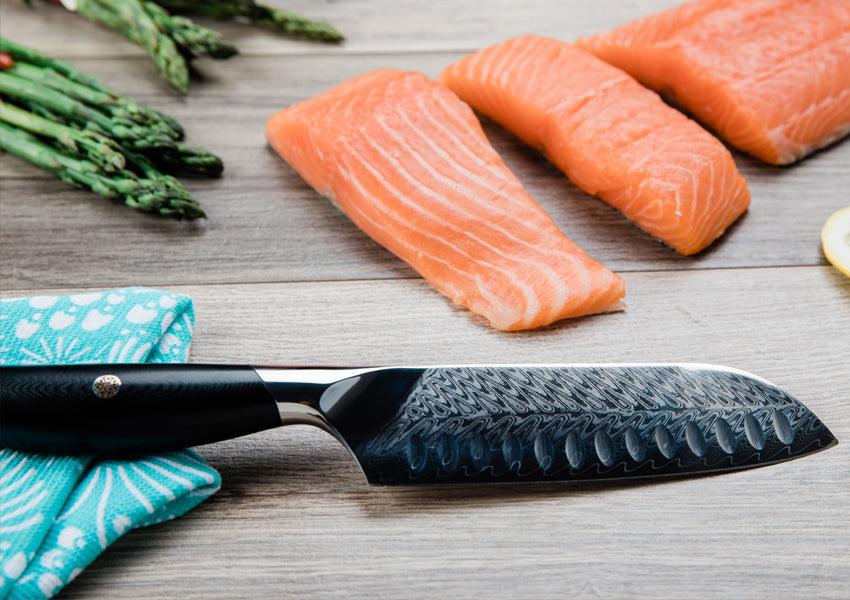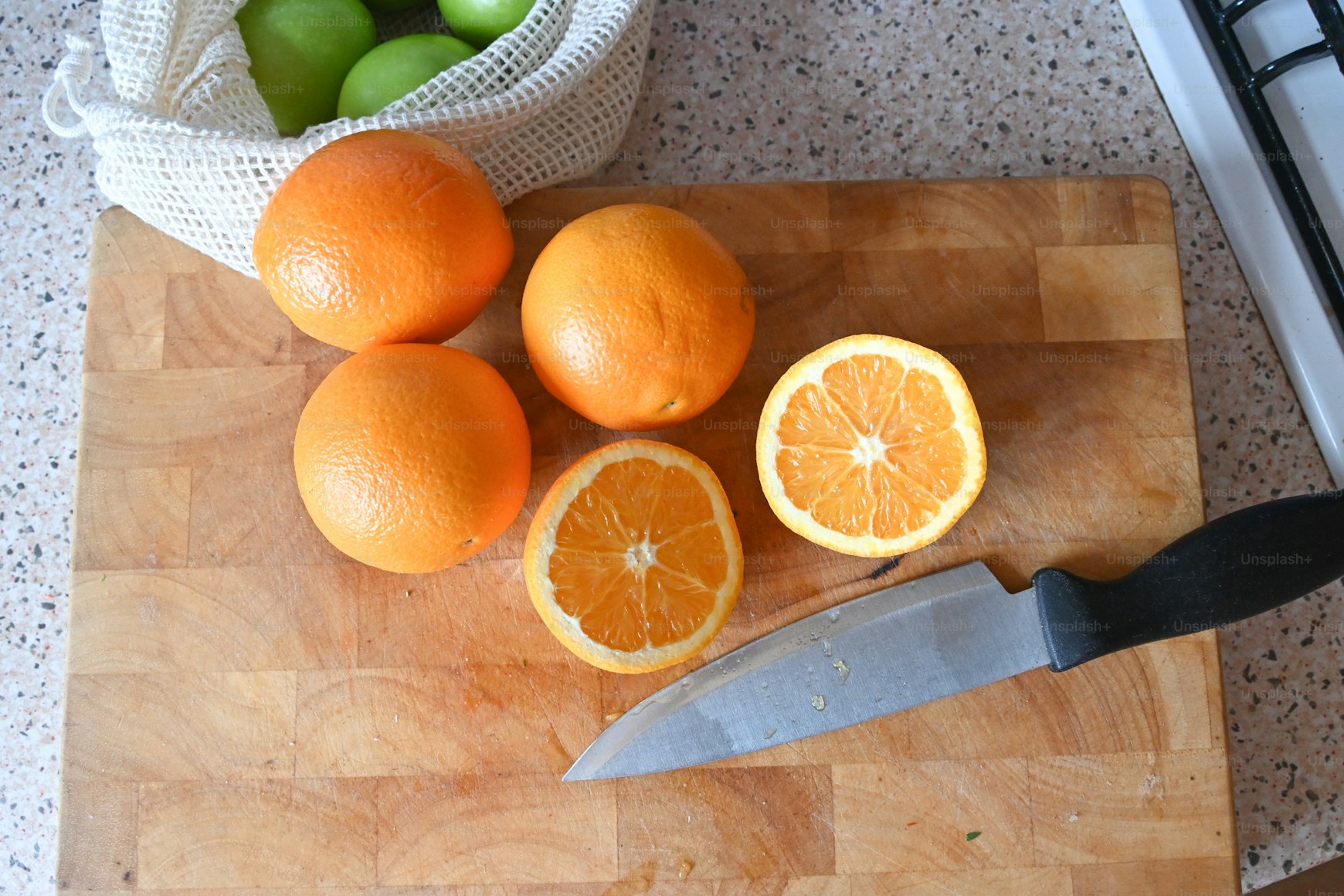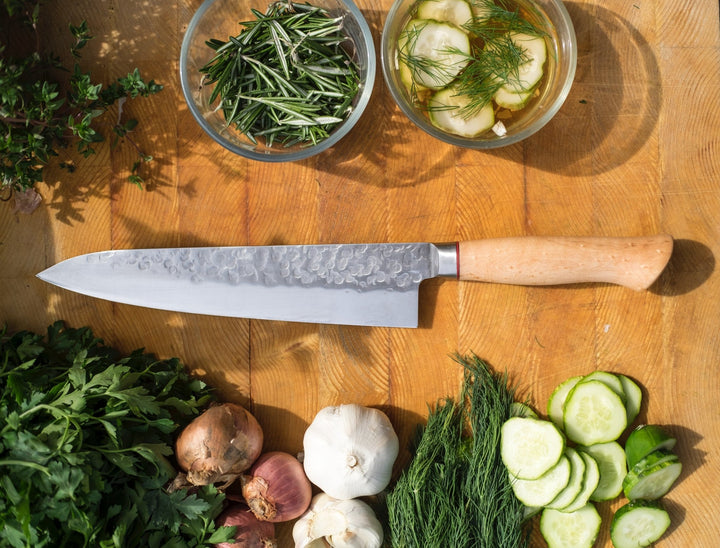The debate over whether carbon chef knives are necessary has intrigued many kitchen enthusiasts. With the rise of advanced knife manufacturing technologies, kitchen hobbyists are now spoiled for choice. But is a carbon chef knife really worth the investment? In this article, we’ll dive deep into the subject, providing a comprehensive analysis of the benefits, drawbacks, and scenarios where a carbon chef knife may be your best pick.

Understanding Carbon Chef Knives
Carbon chef knives have been revered for their tremendous quality and performance. Unlike stainless steel knives, carbon knives are made from steel with a higher carbon content. This high carbon content imparts several desirable properties to the knife, making it a favorite among professional chefs and cooking enthusiasts alike.
What Makes Carbon Chef Knives Special?
One of the most significant advantages of carbon knives is their sharpness. Due to their composition, carbon blades can be honed to an extraordinarily sharp edge more easily than stainless steel knives. This level of sharpness makes for precise and effortless cutting.
Maintaining Your Carbon Chef Knife
However, owning a carbon chef knife comes with its fair share of responsibilities. Because of its higher carbon content, these knives are prone to rust. Therefore, proper maintenance is crucial. Regular polishing with mineral oil and prompt cleaning after each use can help prevent rust formation.

Benefits of Using a Carbon Chef Knife
Unmatched Sharpness and Precision
As previously mentioned, the sharpness of carbon knives is unparalleled. This attribute is especially beneficial when you need to make precise cuts. From chopping herbs to slicing meat, a carbon knife ensures smooth and clean cuts every time.
Durability and Longevity
If maintained properly, carbon chef knives can last for years. Their durable nature allows them to handle even the toughest cutting tasks without chipping or breaking. This makes them a long-term investment for your kitchen.
Enhanced Control and Balance
Carbon chef knives are generally well-balanced, providing excellent control during use. This balance makes them easier to handle, reducing the risk of accidents and improving the overall cooking experience.

Drawbacks of Carbon Chef Knives
High Maintenance Requirements
While the benefits are substantial, carbon chef knives do require meticulous care. They must be cleaned and dried immediately after use to prevent rust and corrosion. Additionally, they should be stored in a dry place, away from moisture.
Cost Considerations
Carbon chef knives are often more expensive than their stainless steel counterparts. This higher cost can be a deterrent for some, especially casual cooks who may not see the value in such an investment.
Susceptibility to Stains and Rust
One of the primary concerns with carbon knives is their tendency to discolor and rust if not properly maintained. This issue can affect the appearance and functionality of the knife over time.

Carbon Chef Knives vs. Stainless Steel Knives
Performance Comparison
When it comes to performance, carbon knives generally outshine stainless steel knives. Their sharpness and edge retention are superior, making them the better choice for precision tasks.
Maintenance Efforts
In contrast, stainless steel knives require less maintenance. They are more resistant to rust and stains, making them easier to care for. This convenience makes them a favorite among busy home cooks.
Cost Efficiency
Stainless steel knives are typically more budget-friendly. For occasional chefs and those on a tight budget, stainless steel offers a good balance of performance and affordability.
When to Use a Carbon Chef Knife
Professional Cooking Environments
Professional chefs often prefer carbon knives for their exceptional sharpness and durability. These attributes are particularly beneficial in high-pressure cooking environments where precision and speed are crucial.
Special Culinary Tasks
For tasks that require meticulous slicing or dicing, a carbon knife is the ideal tool. Its sharp edge allows for clean cuts, preserving the texture and appearance of food.
Cooking Enthusiasts
If you’re passionate about cooking and willing to invest in high-quality tools, a carbon chef knife is a worthy addition to your kitchen. Its performance can elevate your cooking experience, making meal preparation more enjoyable.
How to Choose the Best Carbon Chef Knife
Blade Length and Shape
The length and shape of the blade are crucial factors to consider. A longer blade provides more cutting surface, while a shorter blade offers better control. Choose a length that suits your cooking style and needs.
Handle Comfort
The handle should be comfortable to grip, providing a secure hold during use. Different materials, such as wood, plastic, and metal, offer varying levels of comfort and durability.
Price and Brand Reputation
Consider your budget and the reputation of the brand. While some high-end brands offer excellent quality, there are also affordable options that provide good performance. Research and read reviews to make an informed decision.
Caring for Your Carbon Chef Knife
Cleaning and Drying
Proper cleaning and drying are essential to prevent rust. Wash the knife by hand with mild soap and water, and dry it immediately with a clean towel. Avoid using dishwashers as they can damage the blade.
Sharpening Techniques
Regular sharpening is crucial to maintain the knife’s sharpness. Use a whetstone or a sharpening steel to keep the edge in optimal condition. Professional sharpening services are also available if you prefer.
Storage Solutions
Store your carbon chef knife in a dry place, such as a knife block or magnetic strip. Avoid storing it in a drawer where it can come into contact with other utensils, as this can dull the blade.
FAQs
Do Carbon Chef Knives Rust Easily?
While carbon chef knives are prone to rust, proper care can prevent this. Clean and dry the knife immediately after use to avoid moisture buildup, and apply a thin layer of mineral oil to the blade regularly.
How Often Should I Sharpen My Carbon Chef Knife?
The frequency of sharpening depends on how often you use the knife. As a general rule, sharpen it every 3-6 months. Regular honing with a sharpening steel can help maintain the edge between sharpenings.
Are Carbon Chef Knives Worth the Investment?
Yes, for those who value sharpness, precision, and durability, a carbon chef knife is worth the investment. Proper maintenance can extend its lifespan, making it a valuable addition to any kitchen.
For more kitchen knife tips, check out this guide or this resource on chef cleavers.
If you want tips on knife care, read this external guide.
As an Amazon Associate, I earn from qualifying purchases.


